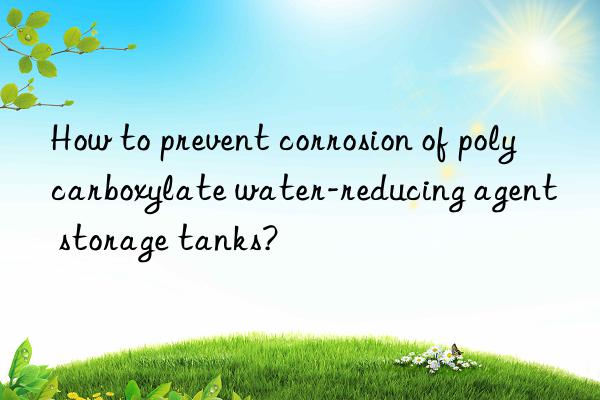
Polycarboxylate water-reducing agent storage tanks can be used to check relevant information. The corrosion of 304 austenitic stainless steel is generally divided into the following categories: First, due to insufficient solid solution treatment or use within the carbide precipitation temperature range, resulting in carbides in the Precipitation of grain boundaries, grain boundary corrosion caused by local chromium deficiency in the material; second, inclusions on the surface of the material destroy the uniformity of the material surface, thereby causing local corrosion; third, it occurs in the presence of ions with strong penetrating capabilities such as chlorine ions Stress corrosion.
Polycarboxylic acid-based water-reducing agents are listed as high-performance water-reducing agents in the current national standards. It is hoped that they will be better adaptable to cement, safer and more effective than other water-reducing agents. However, the actual situation always backfires. In engineering applications, problems of one kind or another are often encountered, which creates a gap with the users' original high expectations for polycarboxylate water-reducing agents. The author's unit has been conducting product testing of polycarboxylic acid-based high-performance water-reducing agents for a long time and has accumulated a large amount of testing data. By analyzing and comparing the detection results and phenomena during the detection process, some problems existing in the detection process of polycarboxylic acid-based high-performance water-reducing agents were discovered.
304 stainless steel fasteners are generally pickled and passivated after cold heading and thread rolling. The main purpose is to clean various grease, oxide scale, etc. on the surface.
Scars, etc., while rapidly passivating the metal surface exposed to the air, forming a new chromium-rich passivation film, thereby preventing rust. Therefore, passivation treatment is very important in the processing of stainless steel fasteners. If the pickling and passivation treatment is not performed properly and the residual acid on the surface is not cleaned cleanly, it may lead to local corrosion on the surface of the material. The environment is harsh, such as: local CI- is high. , low PH value, etc., which accelerates material corrosion. The presence of CI- was also found in the rust samples. The locally high CI- on the surface accelerated the corrosion of the material.
To prevent the causes of corrosion, three measures are taken: First, strengthen the control of the raw material procurement process to reduce the S element content in the finished product; second, wash with a weak alkaline solution before passivation; third, for For products that have rust spots, the surface layer needs to be polished to about 30μm.
</p

 微信扫一扫打赏
微信扫一扫打赏

